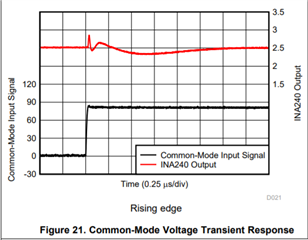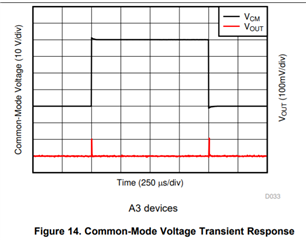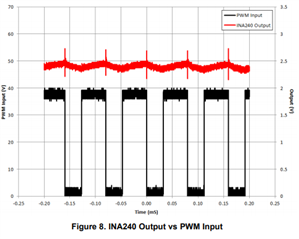Other Parts Discussed in Thread: INA186
Hey Team,
In the DS for the INA240, Figure 21 shows a ~500mV output response for 0 to 90V transient.

In the DS for the INA186, Figure 14 shows a ~100mV output response for a 0 to 40V transient.

- Does that mean that the INA240 will respond at ~250mV for a 0 to 45V transient, which is higher than the INA186 under similar conditions?
- Do we have data that can show better PWM rejection with the INA240? This would be for an automotive application.
- Should my customer be looking at a different parameter when comparing the common mode transient rejection capabilities?
Best,
Dajon McGill


